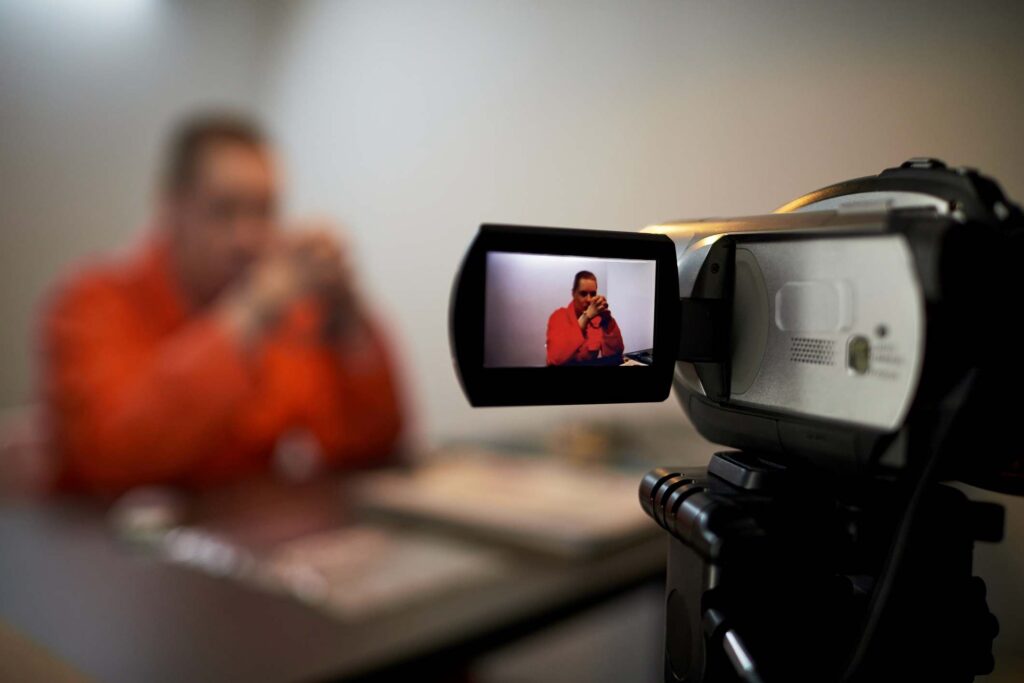Legal Videography Dos and Don’ts for Effective Depositions

Videography has transformed into how legal testimony is captured, reviewed, and presented in court. It conveys not just what a witness says but how they say it. Mastering the art of deposition recording can turn a weak evidentiary record into a strong one. Getting it right begins with understanding the fundamental dos and don’ts of legal video services.
What Is Legal Videography in Depositions?
Legal videography is when you videotape a sworn testimony as part of the official deposition process. It’s handled by a trained videographer for legal cases who ensures each recording follows court-approved procedures for sound, framing, lighting, and documentation.
Unlike a transcript alone, a deposition video provides visual and tonal context. Judges and juries have an easier time assessing credibility, observing hesitation, and interpreting meaning when they have nonverbal cues from legal video documentation. The recording also adds value in settlement discussions, mediations, and trial preparation.
7 Dos for Effective Deposition Recording
Planning a deposition begins long before the camera starts rolling. Preparation, equipment, and professionalism all affect the final product. The following best practices ensure a smooth, accurate, and admissible video recording:
- Do choose a certified legal videographer: Work with a professional who specializes in court videography. Their certification ensures you don’t have to worry about compliance issues or failing to meet admissibility requirements.
- Do test all equipment before beginning: Confirm that the microphones, cameras, and lights are working correctly. Technical glitches can interrupt the deposition or result in incomplete footage.
- Do maintain a professional setting: Keep the background simple and free of distractions. Adjust the lighting to avoid over- or underexposure so every expression is visible.
- Do capture every participant clearly: Each speaker must be visible and audible at all times. Position the cameras and microphones strategically to cover attorneys, witnesses, and interpreters.
- Do start with an on-record introduction: Include the case title, date, location, and participant names at the beginning of the recording.
- Do use timestamps and synchronization: A deposition video synced with its transcript allows attorneys to quickly move between text and footage during analysis or presentation.
- Do confirm proper storage procedures: Secure file-handling practices guard against tampering, loss, or accidental deletion. Always protect footage with encryption or password protection, and back up the video in multiple formats.
6 Don’ts to Avoid During a Deposition Video
Certain mistakes may compromise a recording’s professionalism, completeness, or admissibility. Avoid these six missteps to maintain the integrity of a video deposition:
- Don’t interrupt or talk over the witnesses: Overlapping dialogue confuses the record and makes transcription difficult. Allow each person to finish speaking before responding.
- Don’t use distracting camera movements or zooms: Keep the camera steady and focused. Constant adjustments draw attention away from the testimony.
- Don’t neglect background noise: Computer fans, phone notifications, and hallway chatter can be distracting. Check the acoustics and ask everyone to silence their phones before the deposition begins.
- Don’t record without notice or consent: Under California and federal law, participants must be informed that a deposition is being recorded and given the opportunity to consent, either through advance notice or on the record at the start of the proceeding.
- Don’t rely on low-quality or personal equipment: Consumer-grade cameras and microphones aren’t good enough. Make use of legal video services to ensure a deposition recording that will stand up in court.
- Don’t alter or edit the video without authorization: Any modification of a deposition video could raise questions about its authenticity.
Benefits of Professional Legal Video Services
Working with a professional service provider is highly recommended. Here’s why:
- Enhanced presentation: A professionally recorded deposition delivers crisp visuals and clear audio that reflect well on your legal team. Proper lighting, framing, and sound ensure that every word and expression is easy to understand.
- Accurate portrayal of demeanor: Eye contact, pauses, tone of voice, and gestures add important context that may support or challenge a witness’s testimony. Video allows the judge and jury to interpret these subtleties firsthand.
- Virtual access: Modern legal videography supports online participation through secure conferencing tools. Witnesses, attorneys, and court reporters can join remotely from anywhere with a stable internet connection while maintaining professional recording standards.
- More attention-grabbing: Playing video excerpts in court is often more engaging and persuasive than reading passages from a transcript.
- Organized evidence handling: Experienced videographers store video files so they’re easy to find and match transcripts. This creates a complete, well-organized case record.
Strengthening the Legal Record with Professional Videography
At Talty Court Reporters, we utilize the latest technology to deliver the very best results in your legal case. Turn to us for top-quality court reporting and transcribing services, video and audio conferencing, remote depositions, and much more. For additional information about our services or to request a cost estimate, please contact us today.